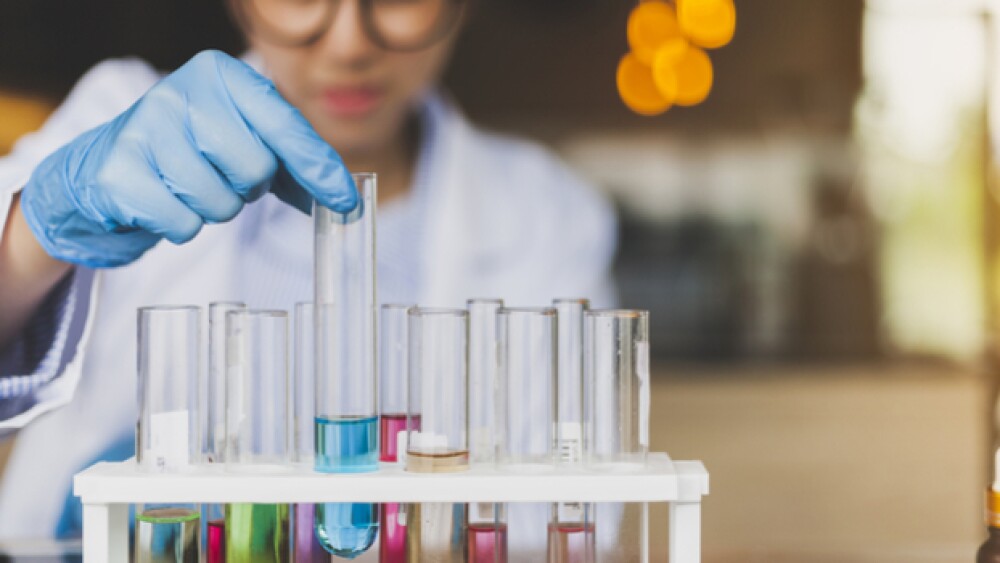Every week there are numerous scientific studies published. Here’s a look at some of the more interesting ones.
Every week there are numerous scientific studies published. Here’s a look at some of the more interesting ones.
An End to Liver Transplants?
Researchers at King’s College London identified a previously unidentified type of cell that may be able to regenerate liver tissue. The cell is called a hepatobiliary hybrid progenitor (HHyP) and forms in early development in the womb. It also continues in small amounts in adults and can grow into two cell types in the adult liver, hepatocytes and cholangiocytes. In this respect, they HHyPs behave like stem cells.
The research was published in the journal Nature Communications.
“For the first time, we have found that cells with true stem cell-like properties may well exist in the human liver,” stated Tamir Rashid, lead author and researcher from the Centre for Stem Cells & Regenerative Medicine at King’s College London. “This in turn could provide a wide range of regenerative medicine applications for treating liver disease, including the possibility of bypassing the need for liver transplants.”
The research team used single cell RNA sequencing to identify different types of cells. They argue that the HHyPs resemble mouse stem cells that have been identified as able to quickly repair mice liver after major injury, such as cirrhosis.
“We now need to work quickly to unlock the recipe for converting pluripotent stem cells into HHyPs so that we could transplant those cells into patients at will,” Rashid stated. “In the longer term, we will also be working to see if we can reprogram HHyPs within the body using traditional pharmacological drugs to repair diseased livers without either cell or organ transplantation.”
Genetics Influences the Microbiome More than the Environment
The microbiome is the trillions of microorganisms that live in and on the body. Increasingly, science is showing the microbiome’s influence on a broad range of diseases. For the most part, the environment was considered to be the major factor on the microbiome, but researchers recently showed, at least in mice, that genetics plays a bigger role in the microbiome than the environment. It’s not known if this also applies to humans, particularly since, unlike mice, humans don’t typically eat the feces of other humans, but the research does suggest that specific genes play a major role in the composition of the microbiome.
Link Between High Estrogen Levels in the Womb and Autism
Scientists are finding many things associated with autism and now they might have discovered another. Researchers analyzed the amniotic fluid of 98 individuals in the Danish Biobank looking at a set of prenatal sex steroid hormones called estrogens. They found that in the 98 fetuses who later developed autism, compared to 177 fetuses that did not, all four types of estrogens were elevated. Genetics are well established as one factor, but it’s possible that increased estrogen exposure during brain development may be another.
Synthetic “Smart” Cells Could Lead to New Era of Therapies
Researchers at University of California, San Francisco (UCSF) developed an artificial protein, designed via computer and synthesized in the lab, that can act like biological circuits inside living cells. They behave, they say, like “tiny autonomous robots” that might be programmed to detect damage and disease and deliver therapeutics in timed, controlled amounts. The protein is dubbed Latching Orthogonal Cage-Key pRotein (LOCKR). It is described as barrel-shaped that opens to show a molecular arm that can control any cellular process, such as direct molecular traffic, degrade proteins or initiate a cell’s self-destruct process.
A Deeper Understanding of Tumor Suppressor TP53 and p53 Mutations
Tumor suppressor gene TP53 is the most deeply studied gene in cancer. And researchers are still finding new insights. Researchers at Baylor College of Medicine studied 10,225 patient samples from 32 different cancers, comparing them to another 80,000 mutations in a database. They found, among many things, that across all cancer types, TP53 mutations were more common in patients with poorer survival rates. They also identified a possible way to more predict prognosis more accurately. Specifically, it relates to the expression of four upregulated genes in mutant TP53 tumors.
A Link Between Liver Dysfunction and Alzheimer’s Disease
Evaluating more than 1,500 patients from the National Institute of Aging (NIA)-sponsored Alzheimer’s Disease Neuroimaging Initiative (ADNI) over two years using five serum-based liver function assays, researchers found a link between liver problems and Alzheimer’s disease. Part of the thinking is that Alzheimer’s might be a systemic disease that affects several organs, including the liver. They found blood biomarkers related to liver function were related to brain imaging and CSF markers associated with Alzheimer’s.
Male Scientists More Likely to Ask Questions in Public Forums than Women Scientists
A recent study published in the American Journal of Human Genetics (AJHG) found that female scientists asked fewer questions than expected at scientific conferences. And it doesn’t appear to have much to do with the percentage of women in the sciences, but something cultural or internal. In the study, it was found that about 45% of the approximately 8,000 genetics to belong to ASHG are women and the annual conference presentations show female genetics make significant contributions to the field. And, the study found, in nine of 14 sub-fields of genetics, the percentage of papers presented by women was greater than their overall representation in society.
But the question-and-answer aspect at these meetings was a different story. They found that 65% of the people presenting questions at the ASHG conferences were male—even when the majority of the audience was women.





